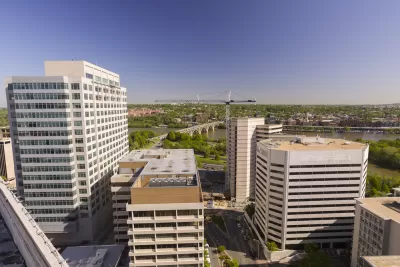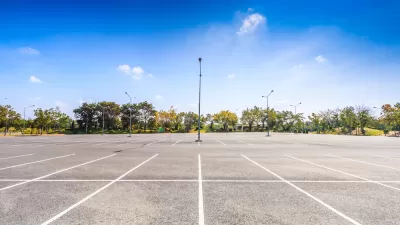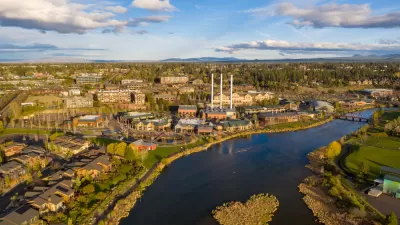Arlington County, Virginia has begun a process to reduce parking requirements for large residential developments near transit stations.

The amount of parking required near WMATA stations in Arlington, Virginia could soon drop, reports Andrew Dupuy, in "a move that reflects a growing understanding of how excess parking promotes urban sprawl and traffic congestion and drives up housing prices."
The Residential Parking Working Group has been working at the requet of the Arlington County manager to examine parking ratios for multi-family buildings built under special exemptions along certain corridors in Arlington County.
"Key recommendations [pdf] from the working group, which county officials say carry significant weight, include greatly reduced minimum parking requirements (MPRs) based on proximity to Metro, as well as reduced parking requirements in affordable housing units and for buildings where bike parking spaces, Capital Bikeshare stations, and car-sharing parking spaces are provided," writes Dupuy.
The article includes more detail on the recommendations, with breaks its reduced parking minimums into two tiers based on the size of the development and the proximity of the development to a WMATA station. Dupuy concludes the article by endorsing the recommendations for their benefit to affordability and walkability in Arlington County.
FULL STORY: Arlington will likely require less parking near Metro stations

Study: Maui’s Plan to Convert Vacation Rentals to Long-Term Housing Could Cause Nearly $1 Billion Economic Loss
The plan would reduce visitor accommodation by 25,% resulting in 1,900 jobs lost.

North Texas Transit Leaders Tout Benefits of TOD for Growing Region
At a summit focused on transit-oriented development, policymakers discussed how North Texas’ expanded light rail system can serve as a tool for economic growth.

Why Should We Subsidize Public Transportation?
Many public transit agencies face financial stress due to rising costs, declining fare revenue, and declining subsidies. Transit advocates must provide a strong business case for increasing public transit funding.

How to Make US Trains Faster
Changes to boarding platforms and a switch to electric trains could improve U.S. passenger rail service without the added cost of high-speed rail.

Columbia’s Revitalized ‘Loop’ Is a Hub for Local Entrepreneurs
A focus on small businesses is helping a commercial corridor in Columbia, Missouri thrive.

Invasive Insect Threatens Minnesota’s Ash Forests
The Emerald Ash Borer is a rapidly spreading invasive pest threatening Minnesota’s ash trees, and homeowners are encouraged to plant diverse replacement species, avoid moving ash firewood, and monitor for signs of infestation.
Urban Design for Planners 1: Software Tools
This six-course series explores essential urban design concepts using open source software and equips planners with the tools they need to participate fully in the urban design process.
Planning for Universal Design
Learn the tools for implementing Universal Design in planning regulations.
City of Santa Clarita
Ascent Environmental
Institute for Housing and Urban Development Studies (IHS)
City of Grandview
Harvard GSD Executive Education
Toledo-Lucas County Plan Commissions
Salt Lake City
NYU Wagner Graduate School of Public Service





























